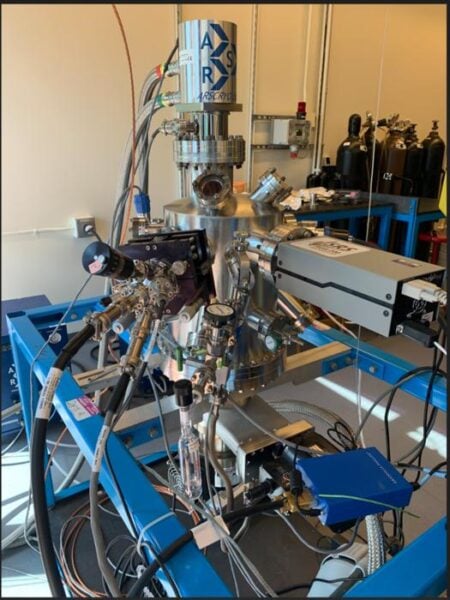In the vast, cold expanses of space, the seeds of life may be taking root within tiny ice particles. New research from Wellesley College suggests that low-energy electrons, produced by cosmic radiation, play a crucial role in creating the building blocks of life in these cosmic ice labs. This discovery could revolutionize our understanding of how life began on Earth and potentially elsewhere in the universe.
Presented at the American Chemical Society’s Fall 2024 meeting, the study led by undergraduate researcher Kennedy Barnes challenges previous assumptions about the formation of prebiotic molecules in space. While both electrons and photons have been thought to catalyze similar reactions, Barnes and her team found that electrons might be the real workhorses of extraterrestrial chemistry.
“Our calculations suggest that the number of cosmic-ray-induced electrons within cosmic ice could be much greater than the number of photons striking the ice,” Barnes explains. “Therefore, electrons likely play a more significant role than photons in the extraterrestrial synthesis of prebiotic molecules.”
This finding has profound implications for astrochemistry models and our search for the origins of life. It suggests that researchers may need to recalibrate their understanding of how prebiotic molecules form in space, potentially leading to new avenues of exploration in the field.
From Space to Earth: Practical Applications of Cosmic Chemistry
While the study’s primary focus is on extraterrestrial chemistry, its implications reach far beyond the stars. The team’s research into low-energy electrons and radiation chemistry has potential applications in medicine and environmental science right here on Earth.
In the medical field, understanding how low-energy electrons interact with water and biological molecules could inform cancer treatments that use high-energy radiation. “I once had a biochemistry professor say that humans are basically bags of water,” Barnes notes. “So, other scientists are investigating how low-energy electrons produced in water affect our DNA molecules.”
Environmental scientists could also benefit from this research. The findings are applicable to wastewater treatment processes that use high-energy radiation to destroy hazardous chemicals. By better understanding the role of low-energy electrons in these reactions, researchers could potentially improve the efficiency and effectiveness of such treatments.
The study’s methodology is as fascinating as its findings. To mimic the conditions of space in the lab, the team uses an ultrahigh-vacuum chamber with an ultrapure copper substrate cooled to ultralow temperatures. They bombard nanoscale ice films with electrons or photons and analyze the resulting molecules.
This research isn’t limited to tiny ice particles in space. It’s also relevant to larger cosmic ice formations, such as the 20-mile-thick ice shell of Jupiter’s moon Europa. As such, the findings could help astronomers interpret data from space exploration missions like NASA’s James Webb Space Telescope and the upcoming Europa Clipper mission.
Why it matters: This groundbreaking research opens up new possibilities in our quest to understand the origins of life. By highlighting the importance of low-energy electrons in the formation of prebiotic molecules, it challenges existing models and could lead to more accurate simulations of cosmic ice chemistry.
Moreover, the practical applications of this research in medicine and environmental science demonstrate how studying the cosmos can yield benefits much closer to home. As we enter what Barnes describes as a “new Space Age,” this study serves as a reminder of the interconnectedness of all scientific endeavors.
As we continue to explore the universe and search for signs of life beyond Earth, this research provides valuable insights into the fundamental processes that may have given rise to life as we know it. By understanding these cosmic chemical reactions, we may one day unlock the mysteries of our own origins and potentially discover new forms of life in the vastness of space.


